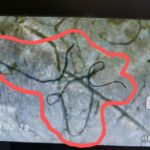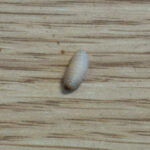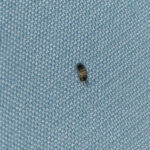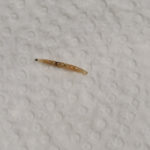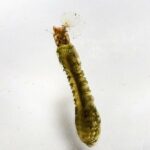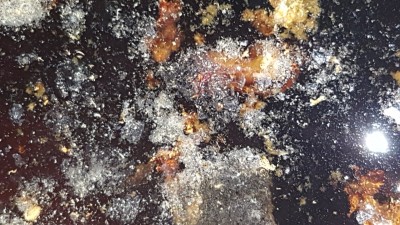The continued popularity of raw foods means sushi worms are gaining a bit of attention. These nematodes are members of the Anisakis family, a genus of parasites that thrives in fish and marine mammals. Sushi worms are rarely found in fish prepared for consumption in the U.S. However, in countries with a preponderance of raw food restaurants and markets – and fewer governmental regulations – the risk is somewhat higher that a human will become infected.
A popular e-mail hoax recalls the horrible infestation in a gentleman who contracted sushi worms of the brain. While other parasitic creatures can indeed migrate to the brain, these worms typically cause mild to severe problems in the throat, stomach and intestine. They can sometimes drill through the intestinal wall and create a little havoc in body cavities, too.
A sushi worm’s life cycle in the water is similar to that of land-locked parasites. The adult worms inhabit the stomachs of such marine mammals as seals, sea lions, and whales. Females lay eggs, which pass through the intestine and eventually into the water. They enter an early larval stage and swim until smaller fish and crustaceans come along and eat them.
Inside their new hosts, the sushi larvae continue to grow, evolving through additional parasitic stages. They reside in abundance in a fish’s gut, but many will bore into the meat and muscle parts. Living out their natural lives, they will continue the path toward adulthood as their first hosts are consumed by larger predators. Eventually, the larger mammals feed on the infected fish and the cycle begins again.
That cycle is often interrupted, of course, when the “catch of the day” ends up at a local market or goes to a commercial processor. When the fish are frozen for at least 60 hours at -4 degrees Fahrenheit (-20 degrees C.), the sushi worms effectively die. In the case of fresh fish, cooking to proper temperatures (no lower than 140 degrees F./60 degrees C.) also removes the likelihood of a human infestation.
If sushi worms are present in sashimi – those tasty raw bits of fish flesh – they may even be visible to the naked eye. Some individuals have reported a tickle in the throat as the worms begin their passage. In many cases, the sushi worms will continue uneventfully through the stomach and exit through the intestinal tract. They will likely die along the way. Milder to severe symptoms may begin occurring in two hours following a meal, but may become present up to two weeks later. This condition is known as anisakiasis. Pain in the abdominal area may occur as well as nausea and vomiting, followed by intestinal distress (often likened to Crohn’s disease). In extreme cases, exploratory procedures and surgery are required to remove the sushi worm.
All About Worms is always free, always reader-supported. Your tips via CashApp, Venmo, or Paypal are appreciated! Receipts will come from ISIPP Publishing.



